
05-01-2023 - Gear
Shot on VENICE 2: How Matt Sakatani Roe Shot the What Might be the Most Epic Sit-Down Interview in the History of Interviews
By: Oakley Anderson-Moore
It all started when Matt Sakatani Roe got a call from his friends at Goodform, Jed Klemow and AJ Kelly. Roe was fresh off his eye-catching work on Purple Hearts, the Netflix film with the highest weekly viewership of any title in 2022. Alan and Kelly posed a question. Would Roe be interested in creating the ring walk with Michael B. Jordan?
“It seemed like we could have the potential to create one of the most epic looking sit-down interviews in the history of sit-down interviews,” describes Roe to Sony Cine. “Arguably, we may have done that with the setup at Dodger Stadium.”
With an army of electricians and grips, four VENICE 2 cameras on matrix head gimbal configurations, some of the best gimbal operators in the world, a 45-foot Scorpio, Dodger Stadium, and Michael B. Jordan, Roe created a Creed 3 IMAX promo with director WALU (Walusako Mwalilino) and Goodform. Did we mention they pulled it all off in less than 24 hours?
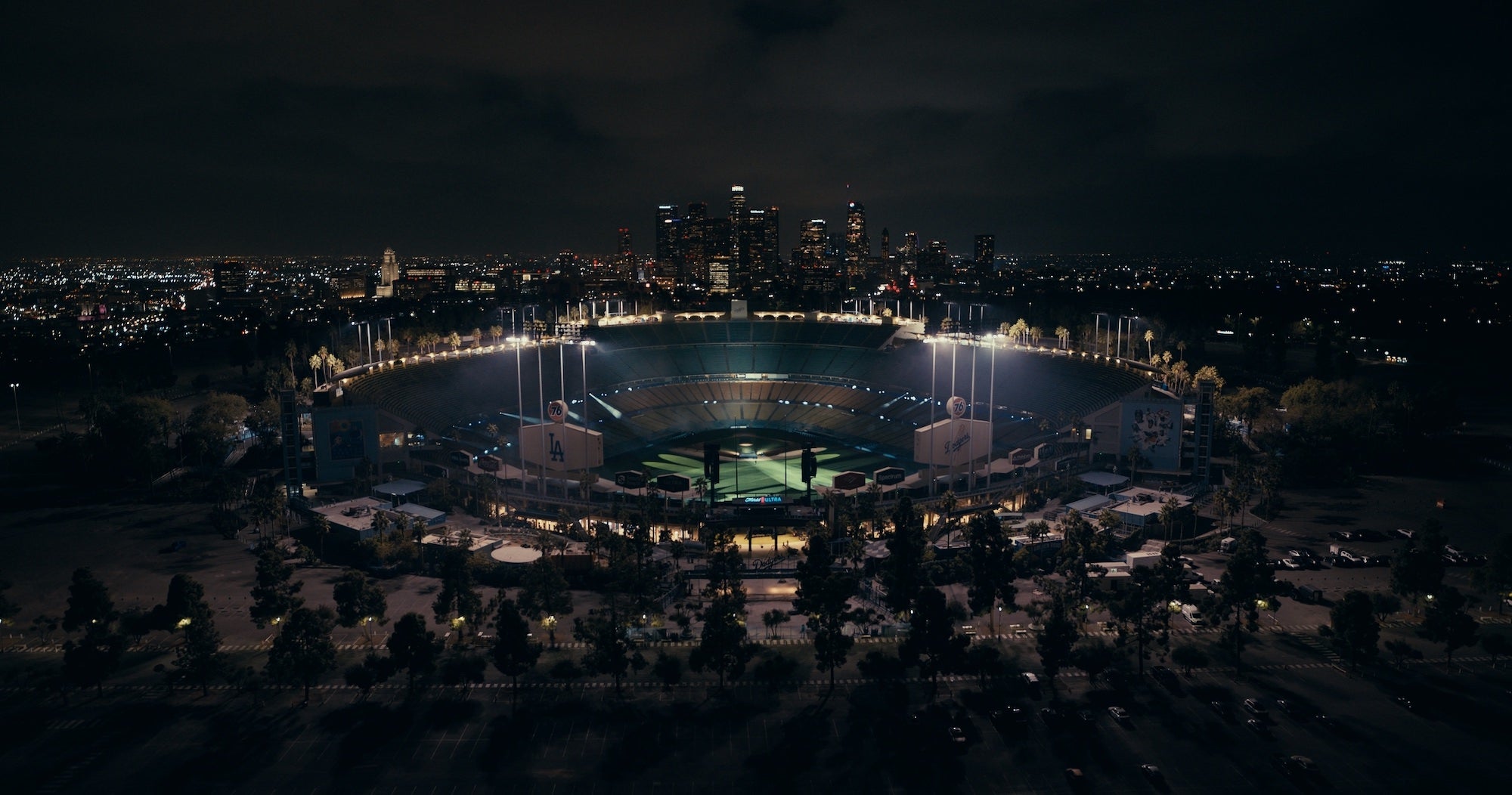
How Roe’s career started at a little kid’s birthday party
Roe is a rising star who got his first feature “Nostalgia” with Mark Pellington before partnering with director Elizabeth Rosenbaum on “Sneakerella” and “Purple Hearts.” Did all roads lead Roe to this point?
“I'm from Alabama, and I kind of grew up on a farm,” explains Roe. “I drove 60 miles on Tuesday nights to go to photography school.”
Roe transferred his foundation in photography to filmmaking and moved to LA to get on sets and go to film school. Funnily enough, his film career started at a child’s birthday party.
“My big break was shooting a director's daughter's fifth birthday video,” says Roe, who was interning for director Mark Pellington (Arlington Road, The Mothman Prophecies) at the time. Pellington must’ve assumed it would be a typical silly kid’s video. But Roe has other ideas.
“I shot it like a Darren Aronofsky film,” describes Roe. “I tried to capture the honesty and anxiety of a parent managing the emotions of their child when all the attention is directed at them. The camera documented the subjective experience of a 5-year-old.”
Roe’s take on the birthday film was a success and earned him a job shooting music videos with Pellington. Now, Roe does everything from studio projects, indie films, commercial work and anything that gets thrown at him.
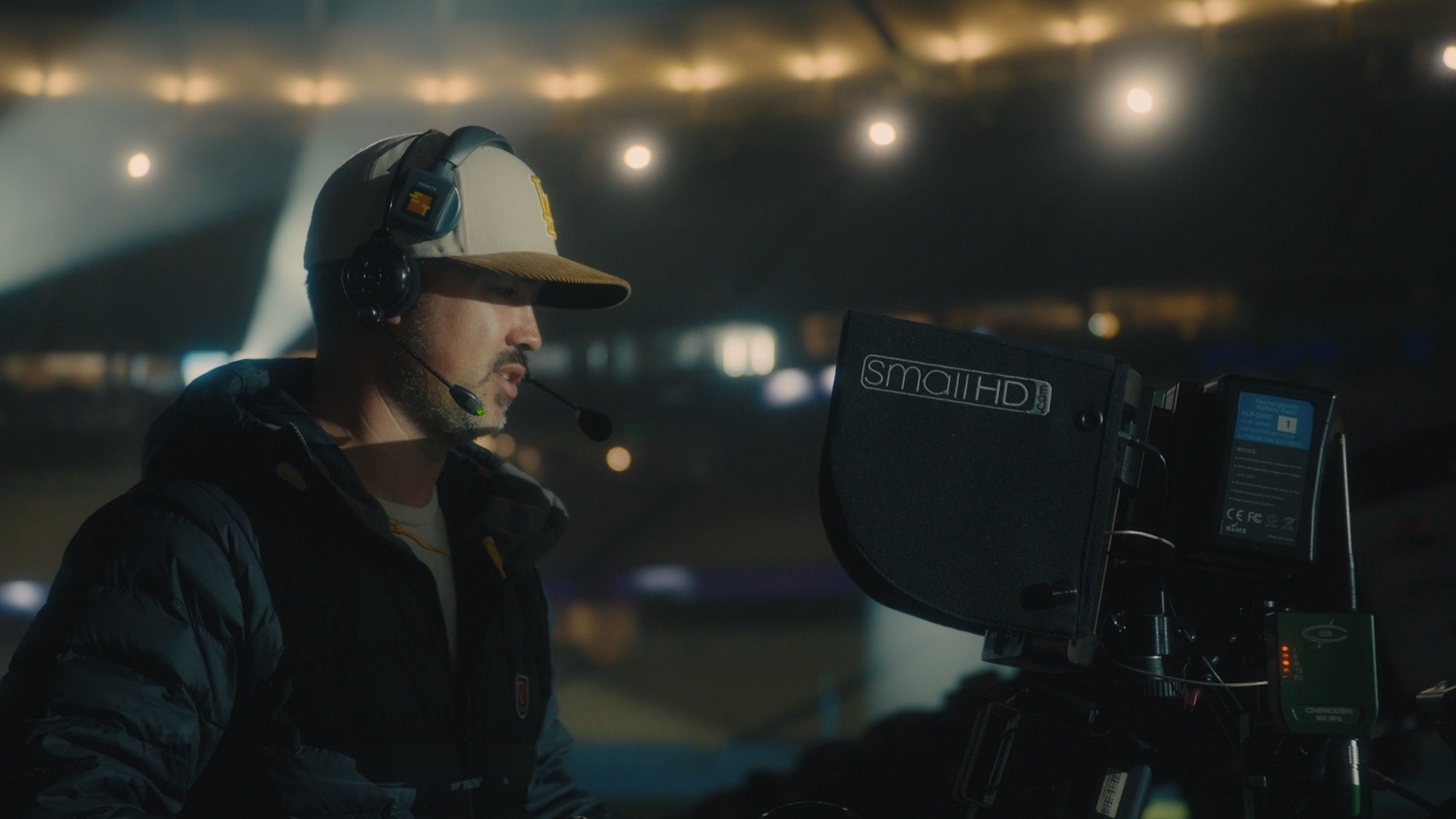
Getting to know the VENICE 2 on Purple Hearts
Roe shot most of principal photography for Purple Hearts on his then camera of choice, the VENICE paired Cooke S7/i lenses.
“There was one specific scene in Purple Hearts that I shot with moonlight,” recalls Roe. “It's this shot of two soldiers walking away. There was a fire in Santa Clarita, and smoke had drifted in the deep background of our location. There was a full moon out…I'm like, I think I can shoot this.”
Roe set the ISO to 6400 and rated the camera at 3200. “It looked great and played clean on Netflix,” says Roe. “It’s the specific quality of the camera that enabled me to achieve that kind of image. On other camera systems, that image wouldn’t have been possible.”
Towards the end of production on the film, the VENICE 2 came out. Roe got his hands on the new model, and never turned back.
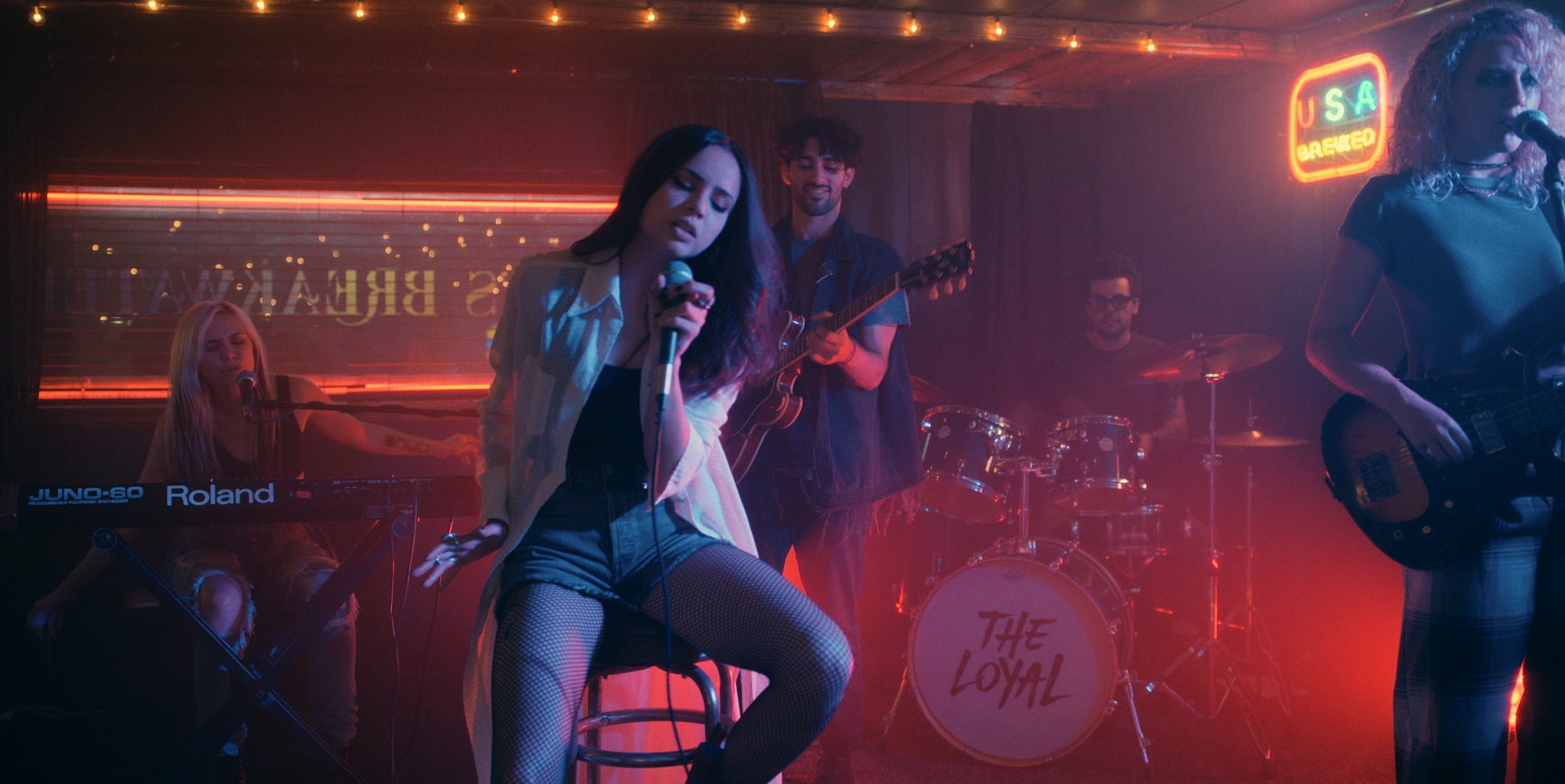
“I think we were their beta-testers,” explains Roe, about how he was able to get a VENICE 2 from one of the first rental houses in the country to get one. “We got to go out and shoot some of the additional photography scenes on the VENICE 2. Honestly, it blew me away with the images. The images felt huge, the smoothness of the tonality. It's my go-to weapon of choice on all my recent projects.”
Part of the reason Roe loves the VENICE 2 over the original has to do with size.
“It’s the ergonomics, the weight,” says Roe. “Once you lose that back recorder piece, you can make it even more configurable. We have the Rialto if we need to go even smaller, but there's something nice about having the camera base, the weight on your shoulder doing a handheld film like that. With the VENICE 1, it was still manageable, but I had put really big lenses on the front, so it was more of a workout.”
On a film like Purple Hearts, Roe needed the smaller weight and the base ISO as he had to change filters and practical lighting many times throughout the day. When the VENICE 2 came out, it furthered everything Roe needed.
“When we started using the VENICE 2 for some of the pickups, and what I've also seen on subsequent projects, the 3,200 base ISO is just incredible. I'm planning on using VENICE 2s on the next project, whatever that comes up. I love them.”
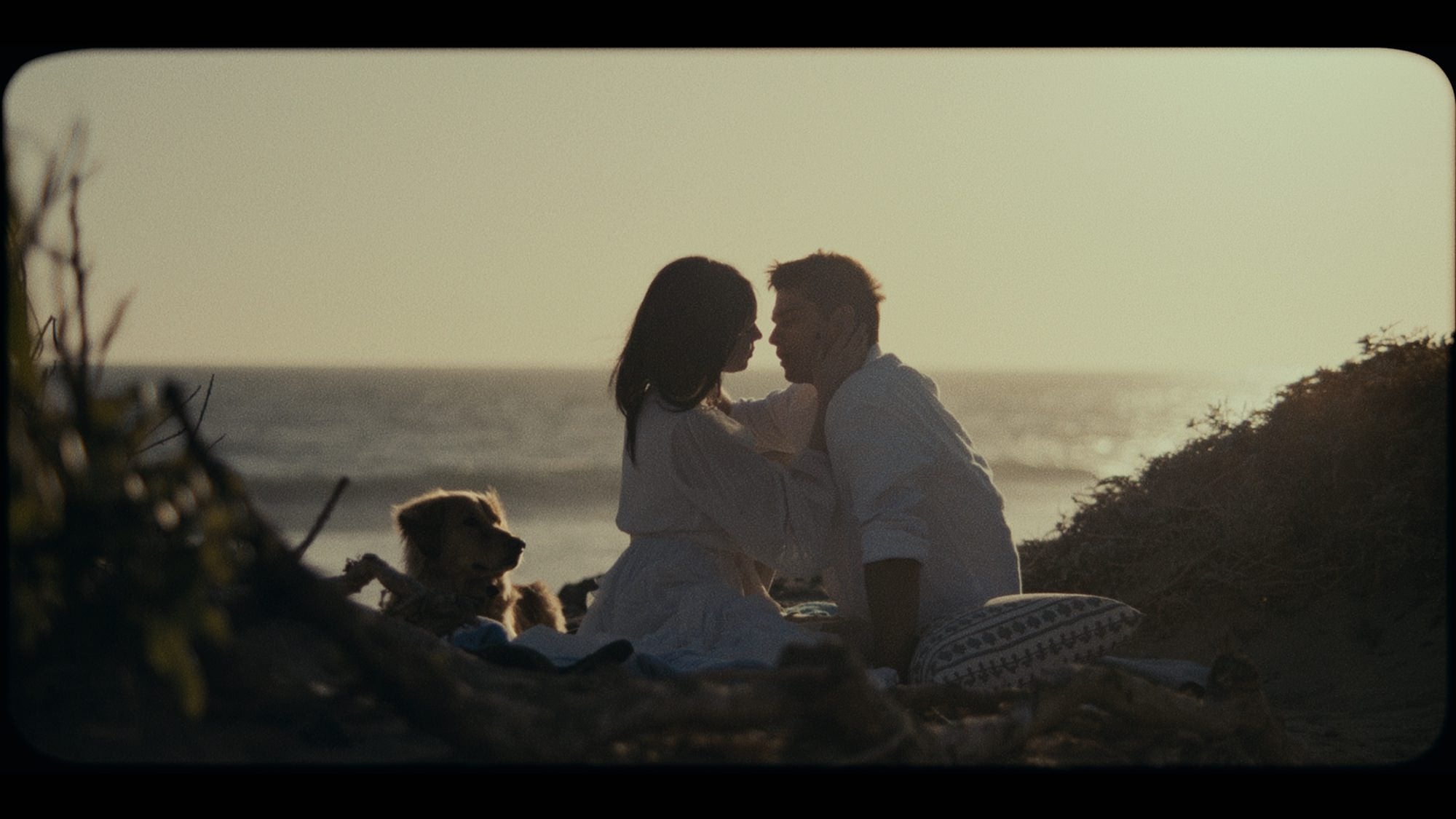
Walking through the hallowed IMAX doors to test the VENICE 2
Roe knew he had to have an IMAX certified camera for the shoot, and he just happened to have access to a bunch of VENICE 2 bodies.
“We knew the piece was going to play before Avatar: The Way of Water on IMAX screens,” explains Roe. “We knew it was going to get one of the biggest distributions possible. We knew the acquisition of the camera technology had to be up to par with what we were doing.”
After some screen tests, Roe had a chance to project at IMAX headquarters.
“It’s where all the filmmakers who do IMAX movies go to test their projects,” says Roe. “As a cinematographer, going through those gates of IMAX to be able to look on the big screen and see and understand how you tell a story at that scope and scale, it’s a once in a lifetime experience. But hopefully not the last time for me!”
Roe was able to gain valuable insight on how IMAX screens translate images at this huge scale. To him, longer lenses on a face lost all sense of environment at this scale, but something as wide as 18mm focal lengths felt too distant and lost the natural compression of the eyes.
“That was a fascinating learning experience to take away,” says Roe, who ended up gravitating towards 29 and 40mm focal lengths for the project. “We knew with Michael B. Jordan's face would be on the screen, and it was going to feel like you could just reach out and touch the 50-foot version of Michael B. Jordan. We wanted the detail and the resolution of the camera sensor to pick up on the projectors. So, we used Signature Primes because of the way they render detail, but not in an overly sharp manner.”
As a cinematographer whose been on the vintage “bandwagon” for a long time, it was initially hard for Roe to think about modern optics.
“Sharpening, I guess that's a bad word for cinematographers,” jokes Roe. “But there is the concept of maintaining contrast and edge detail while still maintaining smooth tonalities and accessibility. When I had this project come around, we wanted to maintain all that detail, so I'm like, ‘Oh, why not? Let's throw on a Signature.’ On VENICE 2 sensor basically the open gate, full frame size, the images felt massive. Even when we were looking on 17-inch monitors in our prep, we knew there was something there.
For Roe, the VENICE 2 has its own kind of look, not exactly like a film stock, but a capture medium that’s a physical choice.
“There's something interesting about it that I don't know technically how to express, but I know emotionally when I see an image shot on VENICE 2, it just feels like it's almost a direct representation of how you're painting the picture in front of the camera,” describes Roe. “There are characteristics of the theme that your eye might not even capture. It blows you away.”
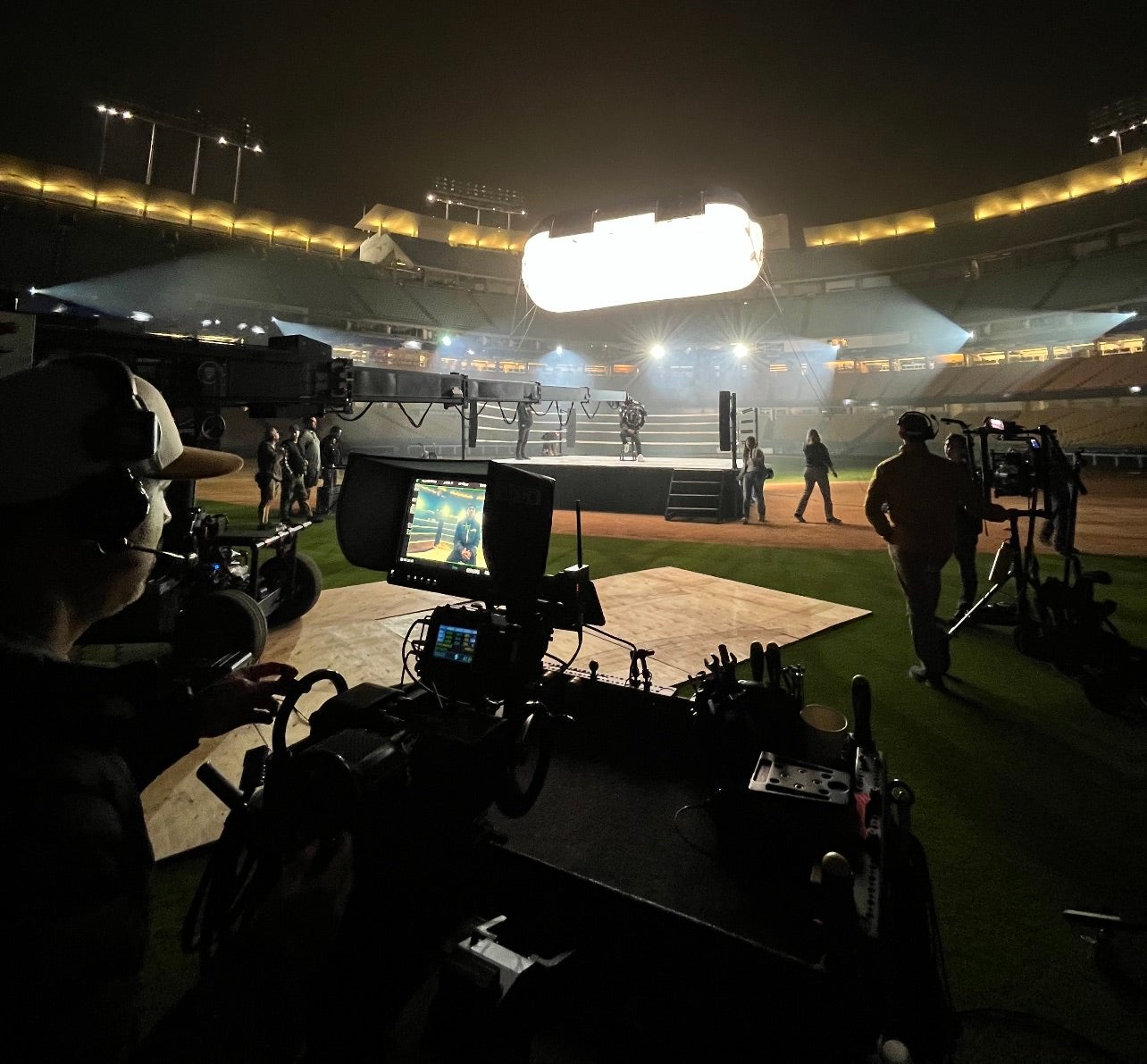
Blasting a ring of fire onto Michael B. Jordan
Roe and his team had an eight-hour load-in to light Dodger Stadium with theatrical mover lights blasting 45,000 lumens from 360 degrees.
“We took over close to a hundred lights with an army of grip and electrics led by Matt Ardine and Julian Janigo, gaffer and key grip,” explains Roe. “I think we had an eight-hour load-in. It was an army of people loading a hundred lights into the venue.”
They only had a total of 18 hours allotted at Dodger Stadium because it’s so expensive.
“We were going to light a ring of fire around the Dodger Stadium and then put up one of an A-list talent, Michael B. Jordan, in the center and just blast a hundred lights at him,” describes Roe.
“What is that going to do to the center's dynamic range? Are we even going to see a human being? That's a testament to the camera’s technology and the way it's able to acquire an image.”
Roe only ended up having one hour to pre-light.
“We only had Michael for an hour and a half, and I had five to six PM to actually do a pre light,” exclaims Roe. “So Matt, the gaffer, only had an hour to dial in over a hundred lights. I had never really seen the overhead mercury vapor lights at night. So what's that going to do? Once we turn those off, what's going to happen? What happened is the amount of lighting that we had became a circumference of 800 feet of a soft source.”
Then, Michael B. Jordan walked in the ring. Since they only had an hour and a half, Roe didn’t have the option to have Jordan sit around while he lit him for every shot.
“We just set the camera to the exposure of what we dialed in, and just let Michael fall into place,” describes Roe. “He basically walked from the back of the ring all the way into the ring, and that was the lighting setup. I lit for 360 degrees in Dodger Stadium for closeups, mediums and wides, and that was all I got. I left it up to the cameras, the sensor to do the rest for me. If Michael walked in shadow, the camera had to pick up the slack. If we walked up and blasted all the way into highlights, hopefully the camera would hold it. Honestly, it shows how the camera was able to achieve that.”
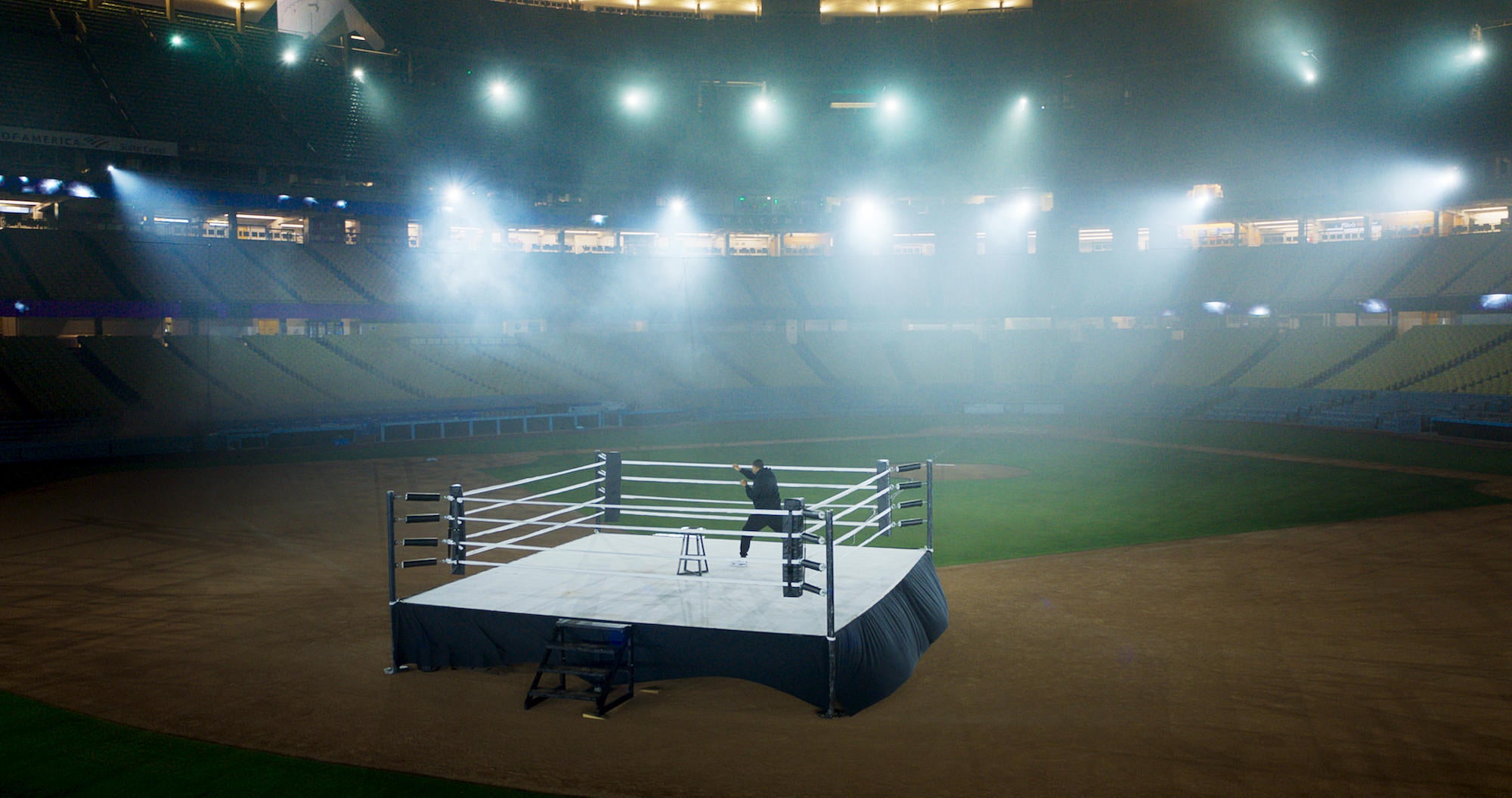
When it comes to cinematography, Roe lets himself be a moth to the light
Roe starts a project by trying to understand its essence.
“Each project I get, I cram for it like a test,” says Roe. “I go out and I source films I think will be good references, images, paintings, poetry, music, and let that form a collage in my brain. I do some collaging in my mood boards. And then when I squint at it, I ask, will feeling, the colors, and the contrast of the images emote what I'm trying to go out and do? I load this information into my brain, and then when I go out and shoot, hopefully the intentions that I had in my subconscious emit themselves back onto the screen with the decisions I make.”
Roe concludes that there’s also an indescribable aspect of shooting that has to do with emotion.
“I understand all the technical aspects, but when I'm on a project, I try to put all that deep down in the back of my brain and be like a moth to light,” says Roe. “You gravitate to where you see the energy, find something that's interesting, and then connect to it, whether it's the proximity to an actor, or the way I shape the light on a face.”
If you saw an IMAX film, you probably saw the epic Michael B. Jordan interview in the ring. Keep an out for more behind-the-scenes from this shoot!




